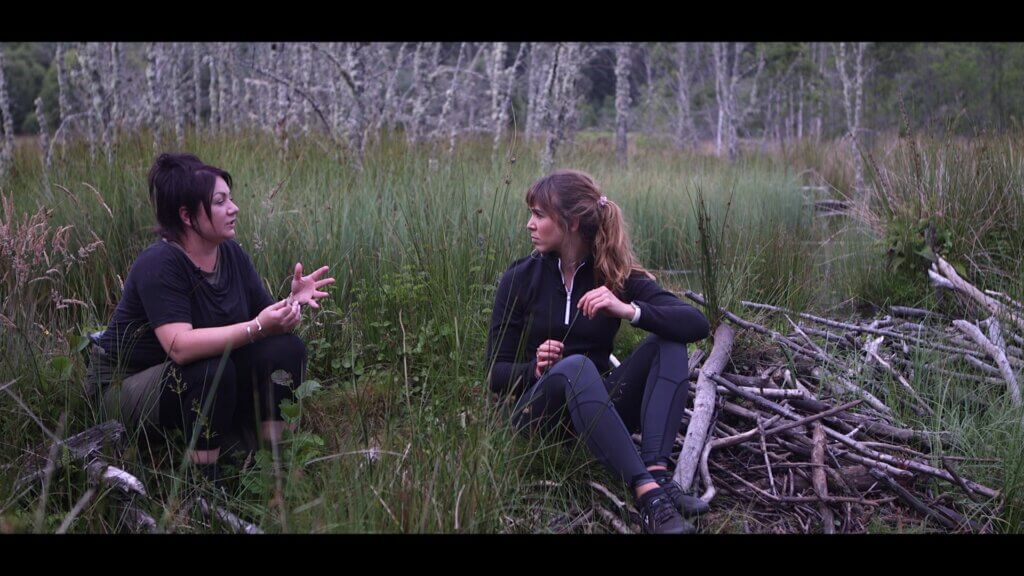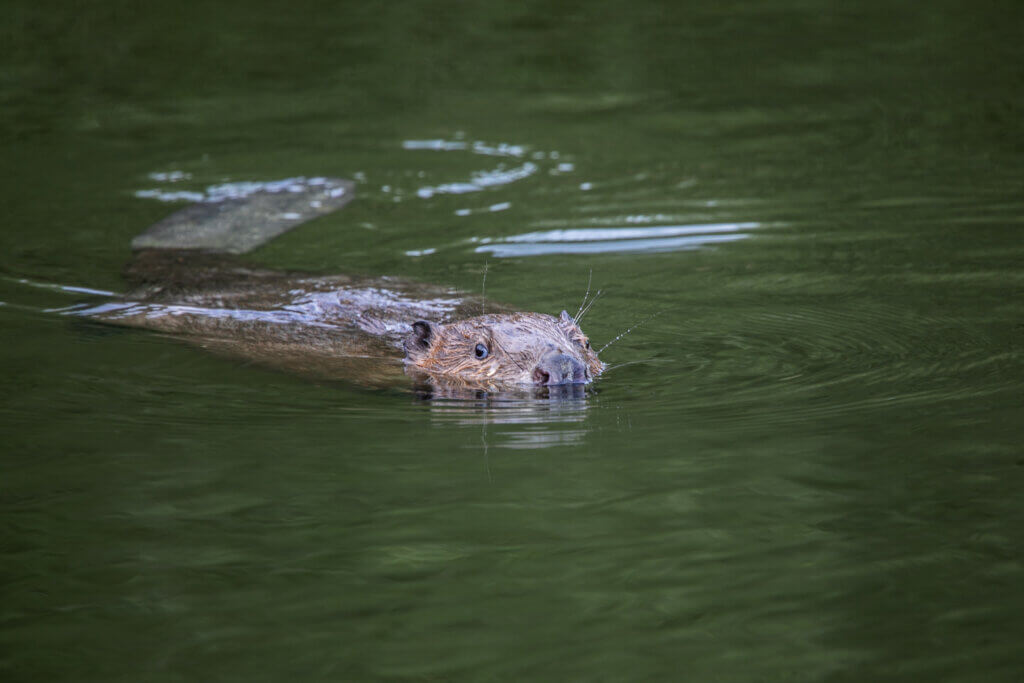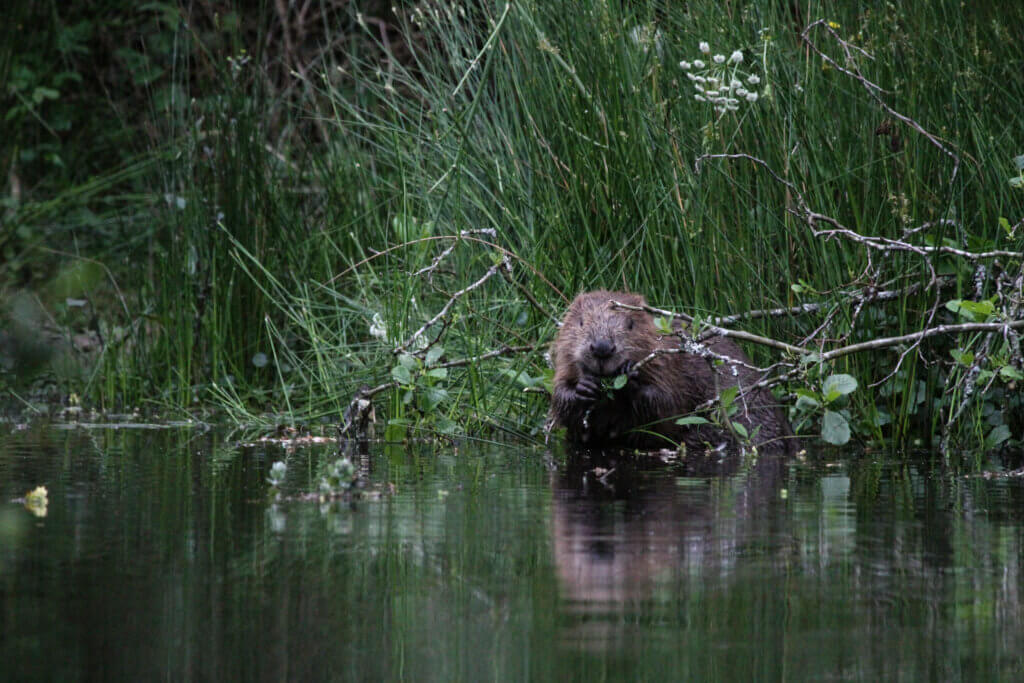
British beavers face fragile future without public support and government leadership, says new film exploring reintroductions
Britain’s beavers could be major allies in tackling the climate and extinction crises – but without more public and government support face a fragile future, says Beaver Trust as it launches a new documentary film exploring the country’s relationship with the endangered but controversial species.
The charity’s short film, Beavers Without Borders, explores the benefits and challenges of reintroducing beavers to Britain’s landscapes. It hopes the documentary, launching on YouTube on 15 November, will appeal to a wide audience and promote discussions around ensuring a better future for the species.
“It’s a critical time for beavers, with the UK Government deciding on their future in England, and calls for the Scottish Government to allow their relocation in Scotland. We hope our film evokes the buzz of life in beaver wetlands, inspires people to welcome beavers back, and helps nurture a reconnection between people and the rest of nature,” said James Wallace, Beaver Trust’s Chief Executive.
Beavers Without Borders follows science communicator Sophie Pavelle on a journey around Britain’s beaver reintroduction sites – hearing from farmers, anglers, scientists and conservationists about the issues, the importance of community support, and how we might learn to live alongside beavers again.

It highlights how beavers are superb ecosystem engineers, with their small dams creating nature-rich wetlands that support wildlife, absorb carbon dioxide, reduce flooding, and improve water quality. But the animals can have localised impacts on agricultural land too.
Now back in Britain after being hunted to extinction over four centuries ago for their meat, fur and oil, beavers remain at risk as a wild species.
The Scottish Government last year declared Scotland’s beavers a protected species. But it still doesn’t allow relocations within Scotland, and says beavers can only spread naturally from their current ranges in Argyll and Tayside – despite having identified over 100,000 hectares of suitable habitat elsewhere, and many landowners being ready to welcome the animals and their biodiversity-boosting activities.
Although some Scottish beavers are relocated to England, the current block on their relocations within Scotland leaves Tayside farmers with little option but to apply for a licence to kill the animals when they damage crops. Last year, 87 beavers – a fifth of the population – were shot.
The UK Government decided this summer that England’s first breeding wild beavers for 400 years could remain in Devon, following the River Otter trial that highlighted their benefits. Elsewhere in England, beavers are being introduced in enclosed areas – but the Government has yet to recognise beavers as native, or provide a licensing and management system allowing beaver releases in the wild.
Beaver Trust says the Government’s national strategy and funding to protect and manage wild beavers should be informed by the lessons learnt by people involved in or affected by reintroductions.
Those sharing their experiences and expertise in the Beavers Without Borders film include Devon-based farmer, ecologist and author Derek Gow – a key figure in UK beaver reintroductions.
“This wonderful film illustrates succinctly the critical importance of the beaver for nature recovery. Without the assistance of this creature’s fabled engineering skill sets, it is impossible to imagine a future where nature can begin to recover itself. By returning the beaver to Britain’s impoverished wetland environments, we are blessing them with the ability to heal themselves,” said Derek.
While beavers on floodplains can cause local problems for farmers, Germany’s Gerhard Schwab explains how people in Bavaria have learnt to co-exist with, and benefit from, the species – including through incentives for farmers to include buffer strips free of cultivation or chemicals along rivers.
At Aberfeldy in Highland Perthshire, Sophie meets Dr Roisin Campbell-Palmer, who works to resolve beaver-related tensions between communities and landowners in Tayside – including by trapping and relocating beavers as an alternative to culling, and through simple mitigation measures.
In Dunkeld, angler Duncan Pepper explains how beavers’ activities in Tayside have improved conditions for river-dwelling fish and so boosted Atlantic salmon populations.
Chris Jones of Woodland Valley Farm – home of the Cornwall Beaver Project – shows how releasing beavers into enclosed areas three years ago has boosted birds, dragonflies and other wildlife.
“Policies, education and funds are needed to help us all learn to live alongside these remarkable but sometimes troublesome animals – with the voices of people living in and managing our landscapes heard, incentives for community-led river restoration, and support to promote acceptance of beavers,” said James Wallace, who is also the film’s executive producer.
The film’s writer and director Nina Constable said: “Filming Beavers Without Borders, and meeting individuals dedicated to restoring our natural world, has been an incredible experience. Hopefully the film will raise awareness about what we can do right now to give nature a helping hand, while debunking some myths surrounding beavers and offering hope at a time when we all need it.”
A free live YouTube premiere of the film, followed by a live question and answer session with Nina Constable and Sophie Pavelle, will be held online on Sunday 15 November from 7pm-8pm. To register for the event and view the documentary’s official trailer, visit https://bit.ly/366N2Zg.

Beavers Without Borders has been supported by The European Nature Trust, Hagan Family Foundation, and SCOTLAND: The Big Picture.
Beaver Trust is a charitable alliance helping communities build resilience to climate change, recover wildlife and reconnect with nature by restoring our rivers with beavers. See beavertrust.org.
Ends
[registration_form]
I very strongly suspect that no other country in Europe has had the capacity to benefit from the return of beavers as much as the UK does. Extensive uplands with particularly high rainfall and currently in largely tree free, overgrazed and overburnt states that are artificially ‘flood friendly’. No wonder Perth, Carlisle, Gloucester and umpteen villages, towns, cities, roads, railways and fertile farmland have been hit by horrendous floods. And the very land where beavers would have the best effect in reducing flood peaks is wonderfully these uplands where their presence would have the least effect on genuinely economic activities – maximum benefit, minimum conflict.
Yet the conversation regarding the beaver being back has revolved around what I gather is very limited, often exaggerated lowland incidents which in many cases wouldn’t have happened at all if farms didn’t go right up to the river’s edge which they shouldn’t do anyway. The real issue is that the farm isn’t allowing a strip of land with natural vegetation that reduces runoff along with soil and farm chemicals. Offers of help in mitigation work has often received the cold shoulder as opposed to enthusiastic public pronouncements of what a menace beavers are. Some people are professional victims.
The discussion has to be reframed, we need to get some trees and thriving beaver populations into the hills where the millions and millions of pounds they’d save from avoided flood damage would pay over and over and over again for either real beaver damage compensation or mitigation efforts in the lowlands. It’s the homes and businesses that wouldn’t be flooded thanks to beavers that should be the central element of the debate, not the corner of a tattie field getting a bit soggy.
So we need to look to the hills, including the grouse moors, to put a few trees then beavers back. I’d stick my neck out and say that the financial and human cost from flooding is so severe that it should be worthwhile to ferry up unsold root veg and the products of tree surgery so beavers can feed, breed and build their dams while trees are growing back.
At present we are focussing upon some farms in the lower Tay and a few bloody anglers thinking their fun will be spoiled which is a huge mistake/trap when the real issue is that one flood in Carlisle cost more than £400,000,000. I’m really looking forward to this film the Beaver Trust has been impressive from the word go and the people that wave the flag for beavers that I’ve met so far have been brilliant.
There is a big problem in some areas where farmers are farming in fields below the river level and protected only by earth dykes. These naturally breach from time to time anyway, but as soon as a beaver is mentioned they get the blame for it instead of the natural folly of growing barley below river level. Farmers, for all their preaching about being stewards of the land, seem to be the most ignorant folks around in terms of knowing how the land actually works.
Then there are the anglers, there is an angling pressure group in SW Scotland which masquerades as a conservation charity, which is fanatical in refusing to accept the possibility of beaver reintroduction. It is very disheartening.
If beavers could be trained to fix soil compaction and prevent perched water tables that would be a much better solution than the end of pipe stuff
It seems to me at least that the inertia and false agricultural hyperbole preventing the widespread real reintroduction of beavers to wider areas of the UK is a scandal. Beavers in pens are at best experiments or zoos they are NOT reintroduction, that involves animals in the wild, wider countryside and it beyond time this started to happen properly.
absolutely! I am more and more disgusted at the workings of the power wealth land nexus and the pure corruption that resides at the heart of those bodies, up to governmeent level that have all the money they want to impose their will and buy support while starving those bodies that might counterbalance this putrid self-interest, of funds, resources and above all the freedom and independence to do their jobs properly. Nature without the energy and altruism of charities, progressive landowners, cheered on by a public slowly emerging from universal ignorance would be in an even worse state than it is now. Blessed be those who fight the unequal fight against those who have always had their snouts in the trough.
First encourage farmers to farm sensibly by making a condition for receiving money for public goods the leaving of 20 metre strips along rivers and streams for public goods. Good for rivers. fish and beavers and exceptionally good for people living downstream and prone to flooding. The money saved should be partly spent in financing teams in every region who can help with mitigation where real problems occur. Invest in framing and publicizing how to live with beavers and allow them to spread naturally with reintroductions given priority where benefits will be greatest. this government claim it is green and understands in advance of COP 26 that biodiversity loss and climate crisis are interwoven let it put its money where its mouth is.
Since about 40% of our food gets wasted there’s absolutely no need to farm up to the river’s edge – unless of course the country thinks throwing food in the bin is more important than keeping houses dry. My favourite video, and I’ve seen thousands by now, is from the Wild Trout Trust and is entitled ‘Grazing Exclusion; Reduced Silt, Pollution and Flash Flood Risk’. It’s a phenomenal demonstration of how heavy grazing increases flood risks – it’s one of those videos everyone in the country should be forced to sit down and watch. If they were they’d be pretty amazed and farming policy would have to change. I’ve seen pictures of beaver ‘damage’ to riverbanks where the real damage was that the banks were short cropped and grazed to death right up to the water’s edge. Leaving strips would be tremendous for wildlife including beavers – fingers crossed this should be the link to the video – https://www.bing.com/videos/search?q=wild+trout+trust+videos&&view=detail&mid=F50EE655F4F677EE2F63F50EE655F4F677EE2F63&&FORM=VRDGAR&ru=%2Fvideos%2Fsearch%3Fq%3Dwild%2Btrout%2Btrust%2Bvideos%26qpvt%3Dwild%2Btrout%2Btrust%2Bvideos%26FORM%3DVDRE